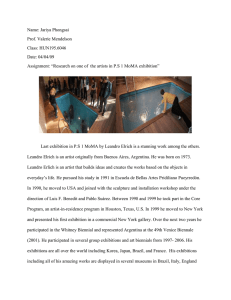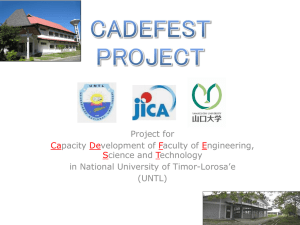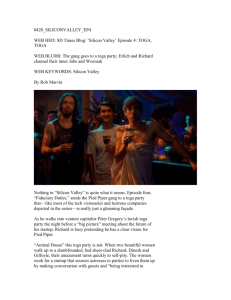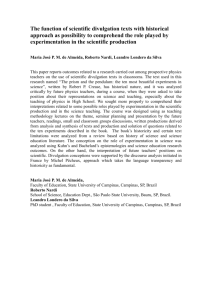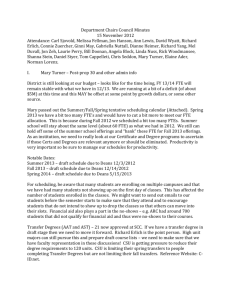Leandro Erlich
advertisement
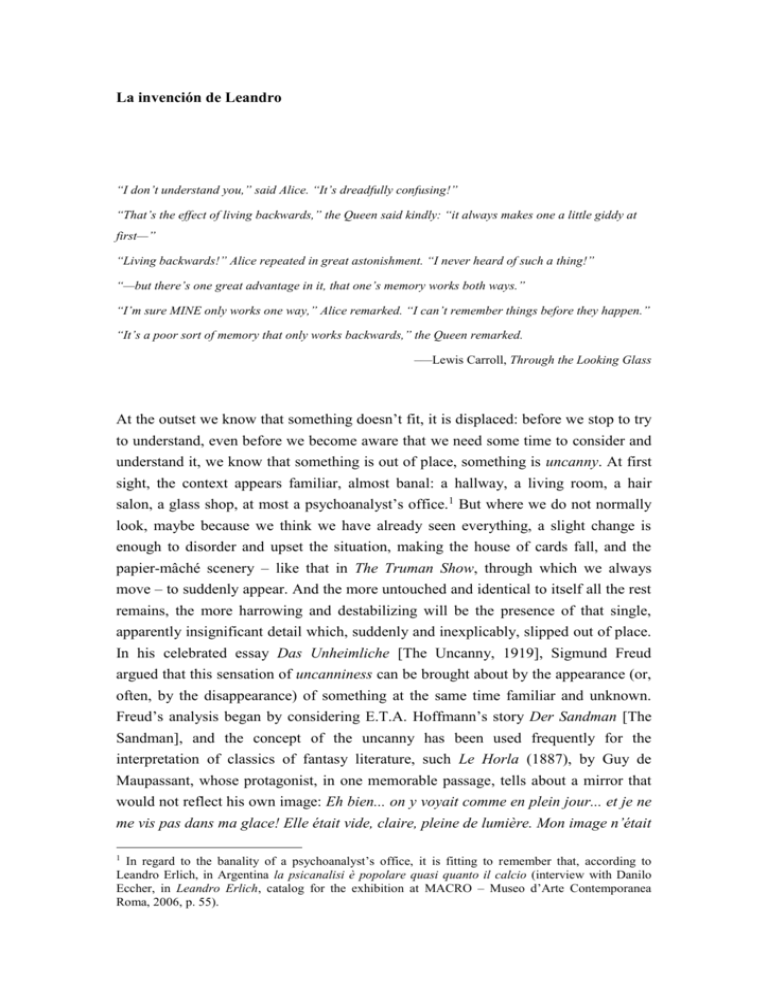
La invención de Leandro “I don’t understand you,” said Alice. “It’s dreadfully confusing!” “That’s the effect of living backwards,” the Queen said kindly: “it always makes one a little giddy at first—” “Living backwards!” Alice repeated in great astonishment. “I never heard of such a thing!” “—but there’s one great advantage in it, that one’s memory works both ways.” “I’m sure MINE only works one way,” Alice remarked. “I can’t remember things before they happen.” “It’s a poor sort of memory that only works backwards,” the Queen remarked. –—Lewis Carroll, Through the Looking Glass At the outset we know that something doesn’t fit, it is displaced: before we stop to try to understand, even before we become aware that we need some time to consider and understand it, we know that something is out of place, something is uncanny. At first sight, the context appears familiar, almost banal: a hallway, a living room, a hair salon, a glass shop, at most a psychoanalyst’s office.1 But where we do not normally look, maybe because we think we have already seen everything, a slight change is enough to disorder and upset the situation, making the house of cards fall, and the papier-mâché scenery – like that in The Truman Show, through which we always move – to suddenly appear. And the more untouched and identical to itself all the rest remains, the more harrowing and destabilizing will be the presence of that single, apparently insignificant detail which, suddenly and inexplicably, slipped out of place. In his celebrated essay Das Unheimliche [The Uncanny, 1919], Sigmund Freud argued that this sensation of uncanniness can be brought about by the appearance (or, often, by the disappearance) of something at the same time familiar and unknown. Freud’s analysis began by considering E.T.A. Hoffmann’s story Der Sandman [The Sandman], and the concept of the uncanny has been used frequently for the interpretation of classics of fantasy literature, such Le Horla (1887), by Guy de Maupassant, whose protagonist, in one memorable passage, tells about a mirror that would not reflect his own image: Eh bien... on y voyait comme en plein jour... et je ne me vis pas dans ma glace! Elle était vide, claire, pleine de lumière. Mon image n’était In regard to the banality of a psychoanalyst’s office, it is fitting to remember that, according to Leandro Erlich, in Argentina la psicanalisi è popolare quasi quanto il calcio (interview with Danilo Eccher, in Leandro Erlich, catalog for the exhibition at MACRO – Museo d’Arte Contemporanea Roma, 2006, p. 55). 1 pas dedans... Et j’étais en face... Je voyais le grande verre limpide, de haut en bas!2 In one of his most well-known installations, El living [Living Room, 1998], Leandro Erlich placed the visitor in an analogous situation, that is, in front of a mirror which, uncannily, replicated everything around it, except for the image of who was looking into it. And nevertheless, confirming the impression that it would be reductive to consider uncanniness as the hallmark of the artworks by the Argentine artist, the initial sensation quickly changes: upon perceiving the mechanisms that operate the “machine,” the visitor understands that s/he is looking, so to speak, from inside the artwork, and not from the outside. More precisely: s/he is looking simultaneously from the inside and from the outside, a situation which, significantly, coincides with Foucault’s description of a mirror: dans le miroir, je me vois là où je ne suis pas, dans un espace irréel qui s’ouvre virtuellement derrière la surface, je suis là-bas, là où je ne suis pas, une sorte d’ombre qui me donne à moi-même ma propre visibilité, qui me permet de me regarder là où je suis absent – utopie du miroir.3 But more than a utopia, the mirror is also a heterotopia, that is, according to Foucault’s definition, an other place, contemporaneously within and outside of society, at the same time fully real and absolutely unreal. The space of the heterotopia is variable; it can be merely transitory or permanent, mobile or fixed, chronological or physical (for example, a pregnancy, an insane asylum, a honeymoon...): a heterotopia is a non-place. In other works by Leandro Erlich, such as Bâtiment [Batiment, 2004 and 2006] or La Torre [The Tower, 2008], the effects pointed out by Foucault are amplified: if any mirror constructs an unreal space around the person looking into it, in this case the viewer occupies a different position within the new image, that is, one sees where one is not, and also, paraphrasing Foucault, how one is not, since one has the illusion of floating in the air. It is fascinating, from the iconographic point of view, to compare the positions of the characters of these installations with those of the dizzying baroque ascensions, such as that of the Sant’Ignazio Church in Rome, 4 perhaps the most famous of all, in which angels, prophets and saints appear, also, to float by the force of some invisible machine, more than by divine intervention. It is also noteworthy to consider the baroque era’s fascination with mirrors, machines, illusions, and especially the construction of labyrinthine and apparently unending scenes, which accounts for the omnipresence of the metaphor of the theatrical scene. Velázquez’s Las meninas [The Maids of Honor, 1656] is above all the celebration of 2 Guy de Maupassant, Le Horla, ed. Albin Michel, Paris, 1970, p. 43. Michel Foucault, Des espaces autres (conference at Cercle d’études architecturales, 14 March 1967), in Architecture, Mouvement, Continuité, n. 5, October 1984. 4 The famous fresco there is by Andrea Pozzo, who painted it from 1691 to 1694. 3 this real space that became theatrical, but is also the demonstration of its author’s virtuosity, both in pictorial terms as well as in the placement of the mirrors, the characters, himself, and, primarily, the spectator. The baroque artist does not hide his tricks, on the contrary, he makes them visible so that his ability will be more evident, and to enlarge the metaphor of the world as a mise en scène: the viewer can trace the process; it’s recognizable. The trick is not presented to deceive the viewer, but to be understood and resolved by him. Such an engagement with the work involves the viewer’s participation and leads to the thought that reality is as fake and constructed as the art; it’s a fiction.5 Despite the minimalist and concise aesthetics of his works, it would perhaps not be mistaken to affirm that Leandro Erlich is a baroque artist, which allows for another baroque and likely arbitrary digression: to read the way in which the artist appears in some of the images serving as records of his artworks (searching for his absent image in the mirror of El Living, or observing Le cabinet du Psy), as a silent and perhaps unconscious homage to baroque painting’s recurrent inclusion of hidden and nearly secret self-portraits, always at marginal and decentralized positions...6 It would be mistaken to consider that this baroque (that is, theatrical, utopian, narrative and fantastic) dimension is contradicted by the coherence of Leandro Erlich’s reflection, in recent years, on the apparently banal theme of the house, which now guides the exhibition Fragmentos de una casa [Fragments of a House], at Luciana Brito Galeria: en mi obra siempre he buscado establecer una relación con lo cotidiano. Con los espacios en los cuales vivimos y transitamos. Pensando estos espacios como un décor donde transcurre una pieza teatral. La relación con ellos y las experiencias que vivimos en ellos me han intrigado siempre.7 That is, the insistence on the universe of the home is justified from the standpoint of theatricalization, which allows Leandro Erlich to gradually construct an imaginary, fragmented and inapprehensible house. A house made of doors which, open, reveal the absence of the lighted bedroom we imagined lay behind them (Las Puertas, 2004), of staircases simultaneously bourgeois, commonplace and Hitchcockian (The Staircase, 2005), of skylights open to a Rorschach sky (Skylight, 2009), of doors frozen at the instant of an explosion (Shattering Door, 2009), of windows with blinds that seem to echo into infinity (Ventana Blindada, 2009), and a single window 5 Interview with Paul Laster, at <artkrush.com>. But the reference could also have been to Alfred Hitchcock, a master of the unheimlich and who, as is known, appeared for a brief moment in all his movies. 7 Author’s introduction to the work The Room, Surveillance 1 (2006). 6 suspended at a great height, the triste, solitário y final [sad, solitary and final]8 vestige of a house razed by a tornado, or by the artist’s imagination (Window and Ladder – Too Late for Help, 2008), an anti-monument that celebrates at one and the same time a city’s capacity for resistance and the power of fantasy over reality. The presence of the windows (and of the skylight, which is nothing more than a window in a ceiling) is particularly significant: if the mirror, as we have seen, is a par-excellence baroque object, it could be argued that the window synthesizes the Renaissance Weltanschauung, based on a well-known metaphor by Leon Battista Alberti, in his fundamental treatise on painting:9 dove io debbo dipingere scrivo uno quadrangolo di retti angoli quanto grande io voglio, el quale reputo essere una finestra aperta per donde io miri quello che quivi sarà dipinto. It is through the open window that the gaze goes out into the world and expands in all directions; through it pass the infinite rays of an imaginary beam of light which, opening into a mathematically calculable spectrum, scans the world and makes it reproducible by the laws of perspective. In this sense, the artist is a scientist, able to methodically calculate measures and distortions: Alberti himself, in the incipit of his treatise, explains: Scrivendo de pictura in questi brevissimi comentari, acciò che ’l nostro dire sia ben chiaro, piglieremo dai matematici quelle cose in prima quale alla nostra materia apartengano (...) ma in ogni nostro favellare molto priego si consideri me non come matematico ma come pittore scrivere di queste cose. In other words, the activity of painters and mathematicians (and, metonymically, scientists) can be so close that Alberti felt it was necessary to insist on being considered a painter, and not a mathematician.10 The field of the Renaissance artist’s activity included techniques and knowledge today considered rigorously scientific, spanning from anatomy and botany, to ballistics, hydraulics and astronomy, as well as architecture and engineering, to cite just some examples of disciplines in which celebrated artists – such as Francesco di Giorgio Martini and Leonardo da Vinci – were outstanding, and which these artists considered as being interrelated, inextricably linked one to the next. Leandro Erlich’s posture in regard to the relation between art and science is similar: io credo che l’arte e la scienza si alimentino a vicenda. Entrambe le discipline necessitano della creatività per fare i conti con il mistero.11 Besides bearing one of the most beautiful titles from the history of Argentinian – and perhaps universal – literature, Osvaldo Soriano’s 1973 novel is a good example of metaliterature which, like the works by Leandro Erlich, seems to simultaneously refer to an infinity of different sources. 9 De Pictura, 1435. The quotes are from the translation in vulgar Italian made by Alberti himself in 1436. 10 It should be remembered that the treatise is dedicated to painter Filippo Brunelleschi, and it is directly to him, therefore, that Alberti makes his request not to be considered a mathematician. 11 Interview with Eccher, MACRO, 2006, op. cit., p. 45. 8 And mystery effectively pervades this world of fantasy in which the mirrors are not only surfaces that reflect our reality, but, literally, openings to a parallel reality, where everything appears possible and each thing refers to something else, bringing to mind everything from the tricks of illusionists who disappear right in front of us, to the ephemeral disintegrations, without aftereffects, of cartoon characters. Depending on the viewer’s mood and references, anyone appreciating a work by Leandro Erlich could recall Houdini’s tricks, or the films by David Lynch, or Alice on the other side of the mirror, or Roger Rabbit, who can throw a large black spot on a wall and disappear through it, as if it were a real hole, and not only the image of one. Or perhaps the viewer will be reminded of La invención de Morel [The Invention of Morel, 1940], probably the most famous novel by its author, Argentine writer Adolfo Bioy Casares.12 It tells the story a fugitive hiding out on a Pacific island which is deserted until the inexplicable arrival one day of a group of tourists, who are gradually revealed as being nothing more than projections produced by a mysterious device invented by a certain scientist named Morel, a machine that recorded the tourists on their previous visit to the island, for one week, and now reproduces all their actions, without solution of continuity. Having fallen in love with one of the tourists, the fugitive discovers how the machine operates and, even knowing that anyone recorded by it will die, he decides to turn it on again so he can record himself at her side, and thus pretend, for the rest of eternity, to be her lover. Leandro Erlich cites Bioy Casares, together with other names fundamental to 20th-century Argentine literature,13 among his references, and there really are numerous points of contact between the novel and the themes recurrent in his work: the spectator’s constant uncertainty in regard to the nature of what s/he is looking at (illusion or reality?);14 the uncanny feeling brought on by the inexplicably displaced details; the slightly out-ofphase overlapping of the world and its representation;15 the progressive discovery and comprehension, on the part of the spectator, of the mechanism that operates the machine and generates the illusion; the idea of creation as a process at one and the 12 In the prologue written to introduce the novel, Jorge Luis Borges affirms: no me parece una imprecisión o una hipérbole calificarla de perfecta. 13 In the cited interview with Eccher, talking about the importance of Argentine culture in his work, Leandro Erlich states: credo che siano moltissimi gli elementi che configurano tale bagaglio culturale: dalla letteratura argentina, con i suoi celebri Borges, Cortázar, Bioy Casares, fino all’intrinseca complessità che forma la nostra identità nazionale (p. 55). 14 It is extremely significant that in the novel the fugitive plays a spectator’s role throughout a good portion of the book, acting as a mere observer of the tourists’ actions, before deciding to participate physically in the experience to be recorded by the machine. The analogy to what normally happens in Leandro Erlich’s works is evident. 15 In the novel, this out-of-phase condition sometimes results in the appearance of two suns and two moons; among Leandro Erlich’s works, the best example of the use of the out-of-phase condition as a mechanism to engender the uncanny and to reveal the operation of the installation is perhaps found in El Ballet Studio (2004), in which three performers of Tai-Chi execute the same choreography simultaneously, in three adjacent and identical spaces. same time scientific and artistic, methodical and nevertheless inevitably fueled by passion. The most fascinating aspect, however, is that the few architectural elements present on the island include a pool similar to the one by Leandro Erlich (Swimming Pool, 1999) insofar as el água está impenetrable (al menos para una persona normal),16 as well as a museum wherein the fugitive sets up residence and in whose basement – into which he ventures in search of medicines – he finds a series of nine identical bedrooms, all in a row, which immediately recall the infinite reverberation of Leandro Erlich’s Changing Rooms (2008). It is precisely here that the fugitive, before the arrival of the tourists, first experienced the impression that he was not alone, and it is generally in the museum that the most significant events in the novel take place. The white cube, eminently modern in its architectural characteristics (un edificio grande, de tres pisos, sin techo visible, con un corredor al frente y otro más chico atrás, con una torre cilíndrica),17 arises as the ideal context for Morel’s projection machine. Ultimately, it is in the institutionalized neutrality of the museum and the gallery that Morel’s phantasmagoric inventions (and those by Leandro Erlich, por supuesto) can operate, filling these orphaned spaces of myths with their profusion of impossible realities, tangible dreams and inexplicable illusions. Jacopo Crivelli Visconti 16 Adolfo Bioy Casares, La invención de Morel, 1940. On p. 27 of the edition available at <http://redescolar.ilce.edu.mx/redescolar/memorias/entrale_2000/pdf/morel.pdf>. 17 Ibid., p. 4.
